The Most Expensive Spices in the World
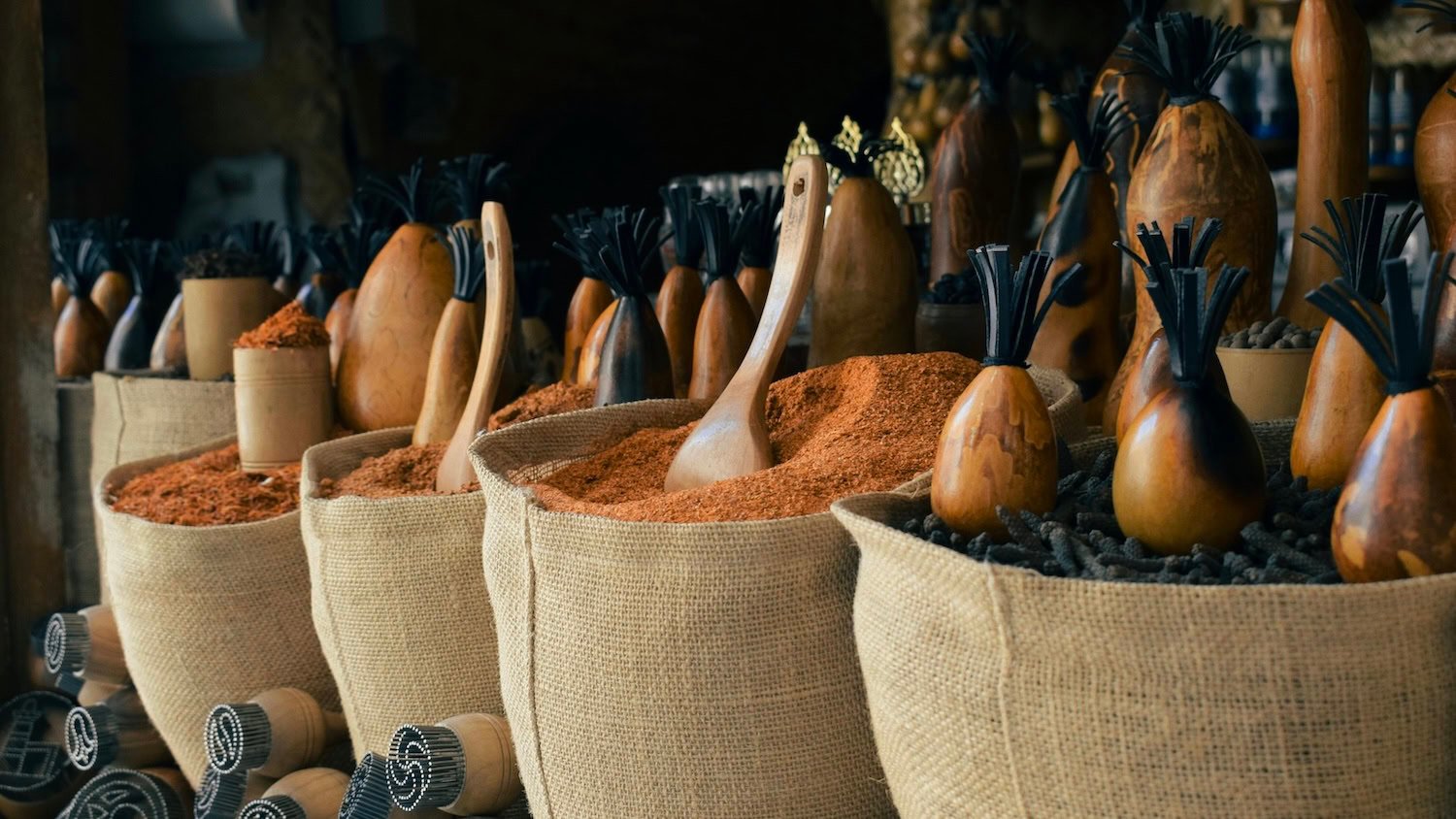
LAST UPDATED: August 1, 2025
READ TIME: 20 minutes
Table of Contents
Spices of Luxury
More than most commodities, spices have had a profound impact on the development of humanity. Starting in the Stone Age, people learned to first gather and use, then cultivate spice plants. Their importance only grew as civilization expanded. The world map, the economy, and the advent of globalization were all spurred by the spice routes of the ancient world. Wars were fought to control where and how spices were traded. History is filled with tales of the influence they commanded.
Though not as dominant in the global economy as they once were, spices remain a significant export for some countries, contributing to their GDP and supporting local communities. If there's a single truth about spices, it's that they have staying power. Spices continue to nourish our lives through the food we eat, the medicines we take, the colors we love, the clothes and scents we wear, and how and where we travel. Even in a world where we’ve largely supplanted the natural with the synthetic, spices maintain their mystique and value, with some priced above precious metals. Here are today’s most expensive spices.
1. Saffron
Up to $10,000 / lb (~$22,000 / kg)
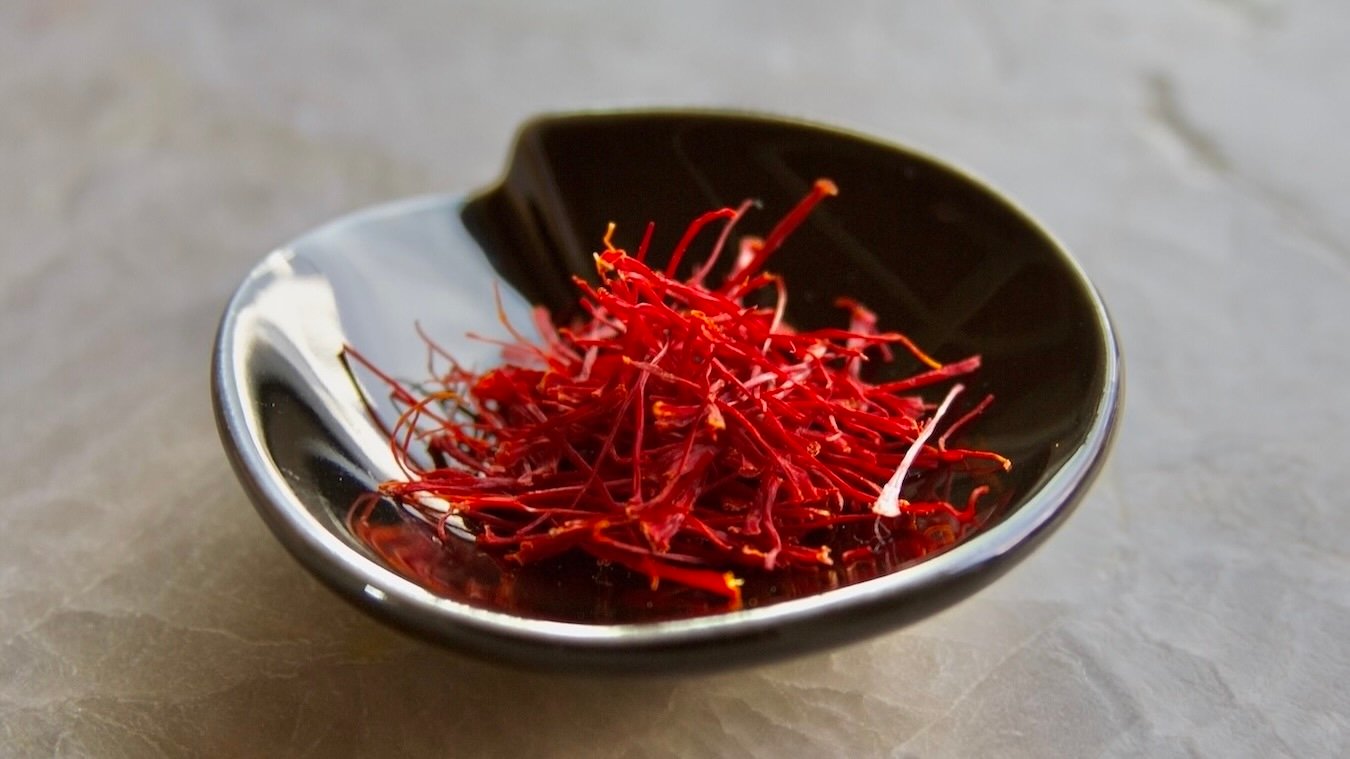
What Is Saffron?
Conjuring visions of opulence, saffron is undoubtedly the world’s most expensive spice. Its nickname “red gold” is quite fitting since it’s often been worth more than its weight in gold throughout history. A prized ingredient in rice dishes, saffron has a uniquely earthy flavor. Smelling of hay, leather, tobacco, and honey, its aroma and distinctive taste are extremely complex, but the spice itself is oddly simple. It is just the stigmas of the saffron crocus (Crocus sativus). Each crocus flower holds only three red stigmas that shoot out next to an orangish, yellow stamen within six purple petals. The dried stigmas, "saffron threads," are the spice.
Native to Greece, the Middle East, and Central Asia, the saffron crocus has been cultivated for millennia. With Minoan frescoes from 1600 BCE depicting saffron harvesting, Romans adoring its culinary and aromatic uses, and Arab traders racing to find sources of it, it was one of the earliest known trade goods and has been in high demand since antiquity. The ancients believed saffron threads contained the sun’s energy and held the secret of immortality. Zeus himself is said to have slept on a bed of saffron.
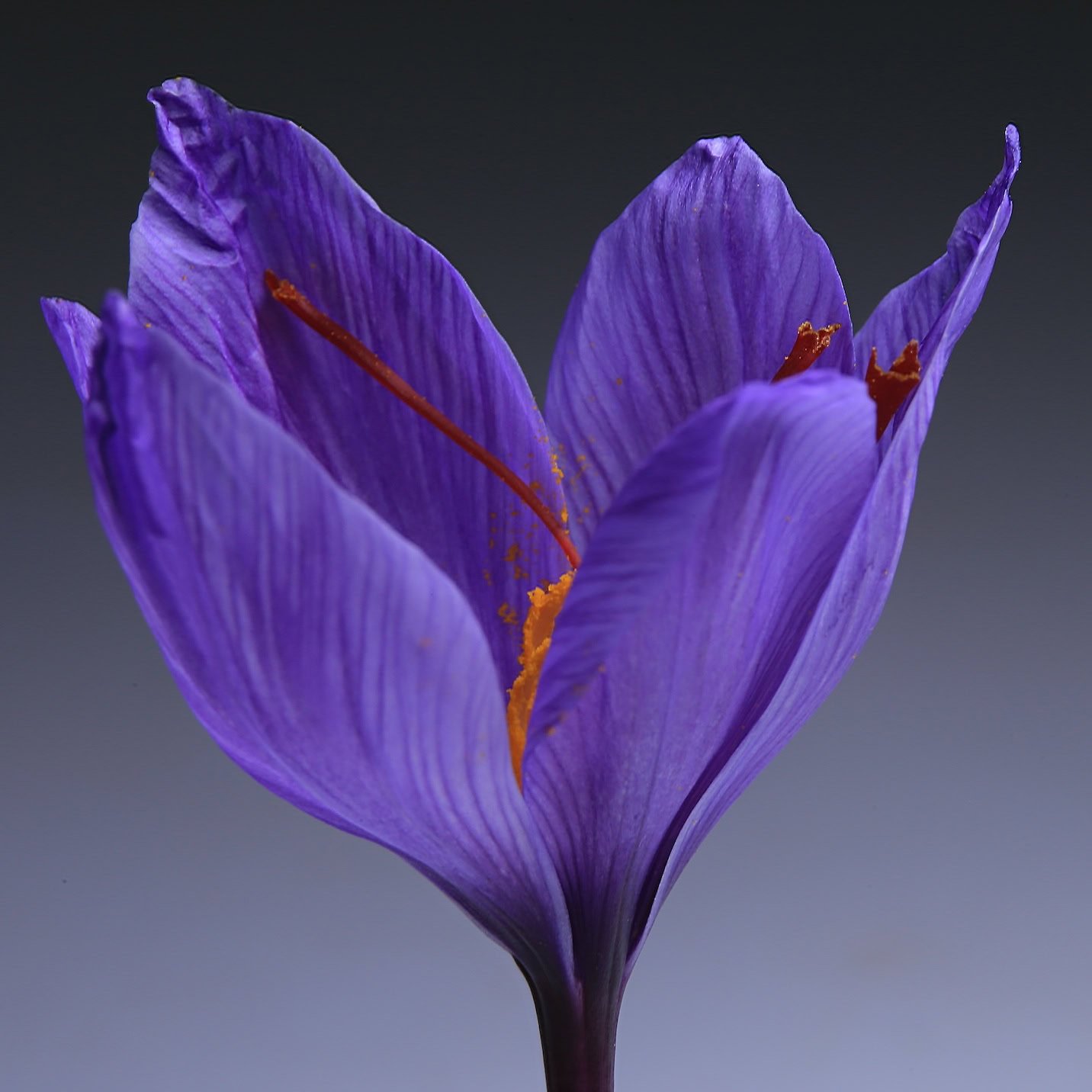
Why Is Saffron the Most Expensive Spice in the World?
Saffron is always expensive because of its global popularity, limited geographic range, and the enormous amount of effort and acreage required to produce even small amounts.
Saffron cultivation is an enormous undertaking. About 75,000 flowers grown on a plot of land the size of an American football field are required to produce just one pound (0.45kg) of genuine saffron. 150 flowers will produce just one gram. Making the process even more onerous, the blossoms only last a few days and must be collected the same morning the flowers bloom. Harvesting saffron must be done by hand, so workers move diligently through the fields, carefully plucking and placing each flower in a basket. Each stigma must then be manually removed and the red upper tips of the stigmas must be separated. They are then roasted at low temperatures to dry them before they deteriorate or mold. Only master farmers can oversee the drying process because even a minute too long over the flames can ruin the batch, losing days of work and thousands of dollars. After this meticulous work, the saffron is ready to be classified for its color, scent, and taste.
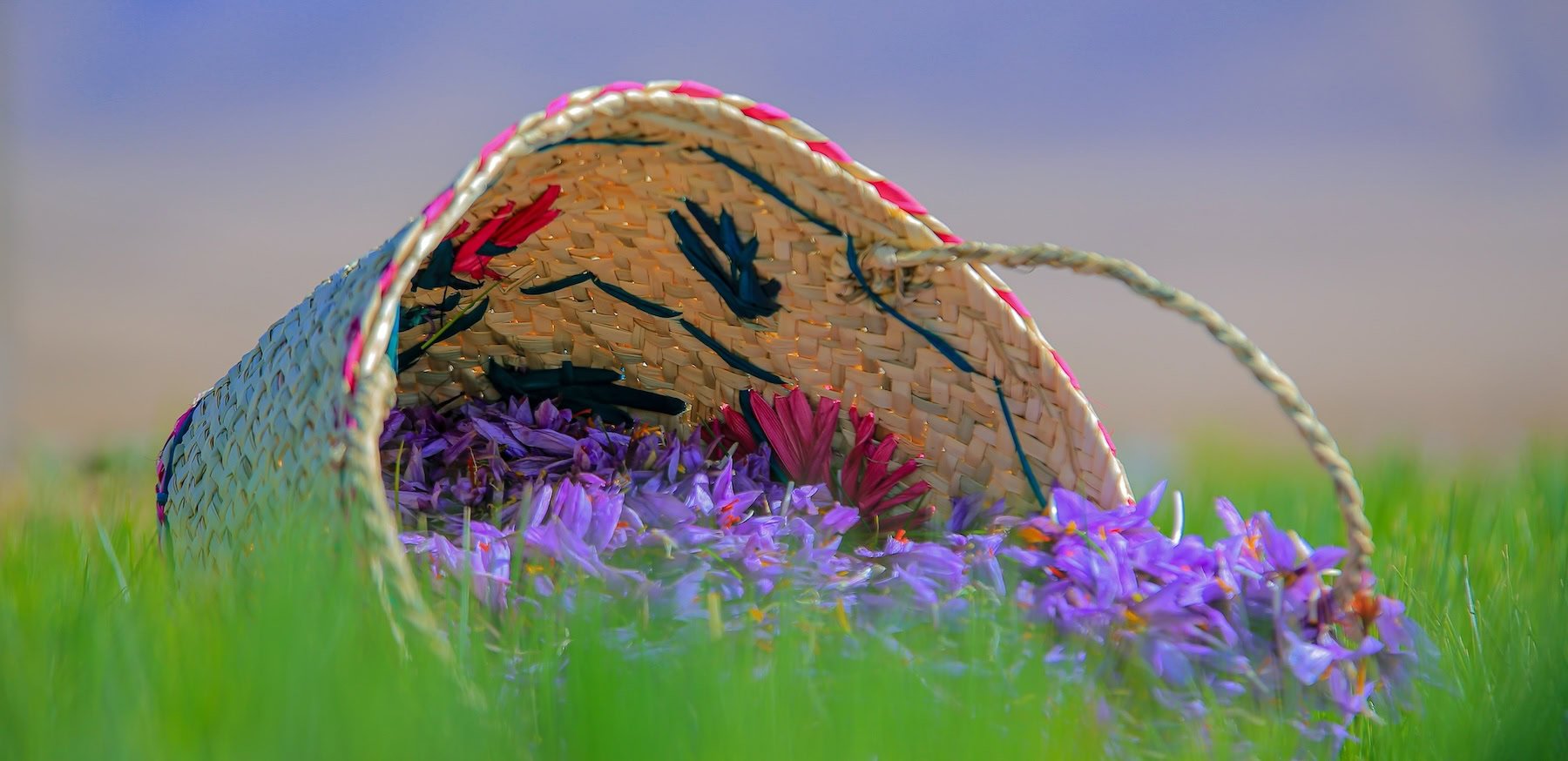
Although the three compounds primarily responsible for its vibrant color (crocin), distinct flavor (picrocrocin), and exquisite aroma (safranal) are well known and used in classifying the quality of the saffron spice, there are at least 150 compounds that contribute its unique effects. The development of a synthetic alternative is thus highly unlikely. Therefore, real saffron will hold its value and real saffron has very strict quality standards. But like any luxury item, it's also adulterated in certain unscrupulous markets. That's why it's imperative to only buy from reputable purveyors.
On top of its attractiveness to the culinary world, saffron's health benefits are piquing the interest of modern researchers, which is increasing demand. The powerful stigmas of the saffron flower are thus poised to maintain their crown as the most expensive spice in the world for generations to come. Luckily, saffron earns its high cost. It's so potent that only a few threads are needed to flavor a dish for four.
Currently, the vast majority of saffron production is in Iran, with some estimates eclipsing 90%. Because of this, international sanctions pose a challenge to exports, sometimes impacting the overall volume and price of saffron in the global market. Other major producers include India, Greece, Morocco, Afghanistan, and Spain.
Learn more about saffron.
2. Vanilla Pods
Up to $1,200 / lb (~$2,645 / kg)
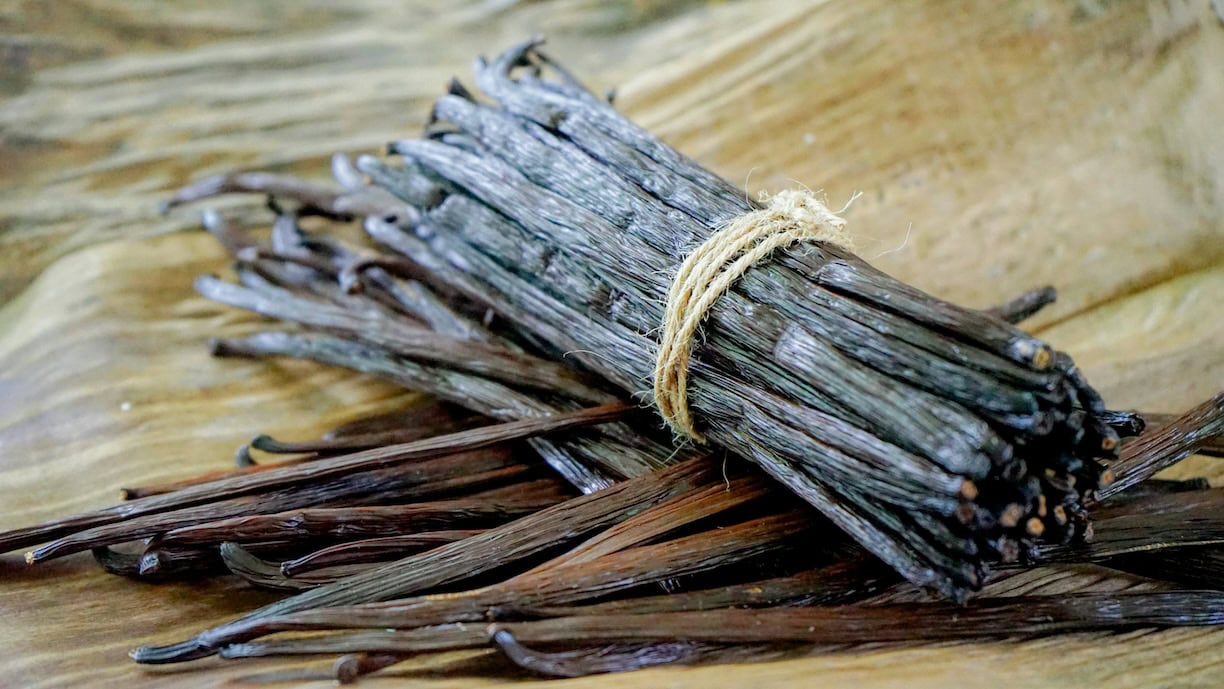
What Is Vanilla?
Although the most popular flavor in the world, the authentic vanilla spice is quite special. Less than one percent of vanilla flavoring comes from real vanilla. The other 99%+ of vanilla products are all flavored with a synthetic version of vanillin, which fails to capture the intricacies of the spice because it is only 1 of over 250 compounds present in vanilla beans. It is one of the supreme ironies of the English language that the term "vanilla" commonly refers to something that is plain, bland, or ordinary. The real thing is exquisitely complex and rare! It is the second most expensive spice.
The spice we know of as vanilla "bean" actually doesn’t come from a bean at all; it comes from the cured and fermented fruit pods of tropical climbing orchids. Although they all have a heady, sweet, comforting aroma and are derived from the same wild Mexican species, only three species out of over a hundred vanilla orchids are used to produce the flavor and aroma we’ve come to know and love: Vanilla planifolia (Mexican & Bourbon), Vanilla × tahitensis (Tahitian), Vanilla pompona (West Indian).
We are most aware of vanilla when manufacturers show dark specks of “vanilla” in their brand of ice cream or dessert, but these are generally bits of the vanilla pod hulls with little flavor and aroma. The primary source of vanilla’s sublime scent resides in the tiny black seeds, called "caviar," within the pod hull. In many cases, if a food manufacturer isn't using synthetic vanillin flavoring, they use alcohol to extract the potent vanilla flavor from the caviar and then flavor their products with that. This allows for a more consistent distribution of flavor and also affords more volume because extracts are often produced from the less expensive and drier Grade B vanilla pods. Unlike the shorter and thinner Grade B pods, though, which have about 20% moisture, Grade A pods (30%) are longer, fuller, and plumper. They are often used when the vanilla bean can actually be seen, such as topping a crème brûlée.
Why Is It Expensive?
Vanilla’s price, like saffron, is also reflective of a very involved production process. The labor starts with the hand-pollination of vanilla flowers since the small bee native to vanilla’s original Mexican habitat is not present in the major vanilla-producing countries. Each flower must be pollinated with a small matchstick on the one day of the year that it blooms. After about nine months, the 8-inch (20cm) green pods begin to turn golden at the base. This doesn't happen all at once, though, so each day the newly maturing pods must be harvested, heated, and then slowly dried over several months.
The curing and fermentation process requires expert skill to maximize yield and quality and involves handling the vanilla beans hundreds of times before the product is shippable. Production is further complicated by external factors like climate change and crime, making vanilla one of the world’s most volatile markets. The vanilla farmers of Madagascar, the world’s largest producer (~80% of global production), are often struck with droughts, cyclones, and theft, resulting in an upsurge in the cost of vanilla globally.
Learn more about vanilla.
3. Organic Dill Pollen
Up to $500 / lb ($1,100 / kg)
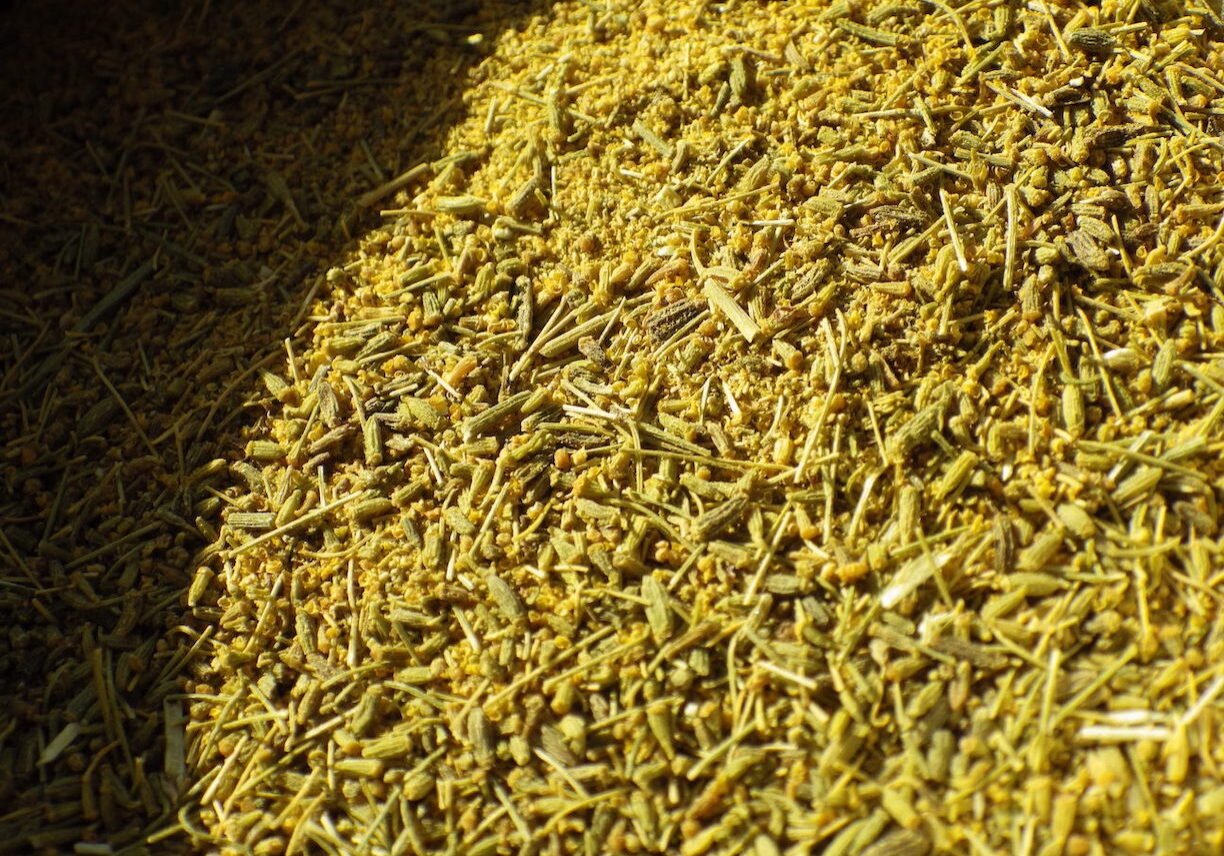
What Is Dill Pollen?
The most popular spice and herb derived from the dill plant (Anethum graveolens) are dill seed (which are actually tiny fruits) and dill weed (the feathery leaves, called fronds). Only recently has its pollen become of significant interest to the culinary scene. The pollen provides a potent, concentrated dill flavor, nuanced from the seed and the weed, that also gives it a longer shelf life. While it can be used as a substitute whenever the other two dill spices are required, the pollen is specifically a finishing spice. It should only be added to a recipe right before serving. This will ensure the pollen’s strong fragrance and fresh flavor are fully present in the dish. It is a perfect complement to creamy soups, pasta sauces, salads, and chocolate truffles, although some would argue that fish—salmon especially—benefit the most from a sprinkling of dill pollen.
Why Is It Expensive?
While dill itself is grown all over the world, the production of dill pollen in particular is much more limited due to the specialized techniques and growing conditions required. Dill is an annual herb, so the harvest of its pollen can only happen once each season. This is typically in the late summer when the flowers are in full bloom. The flowers are carefully collected by hand, then placed on a fine mesh sieve to sift and separate the pollen from the flower heads. It's incredibly labor-intensive, as each flower yields a minuscule amount of pollen. It takes thousands of flowers to produce a usable quantity of pollen, which greatly contributes to its high cost. Additionally, demand for dill pollen, while growing rapidly, is rather niche compared to most spices, which has kept widespread cultivation at bay, thus limiting supply.
Learn more about dill pollen.
4. Organic Fennel Pollen
Up to $450 / lb (~$990 / kg)
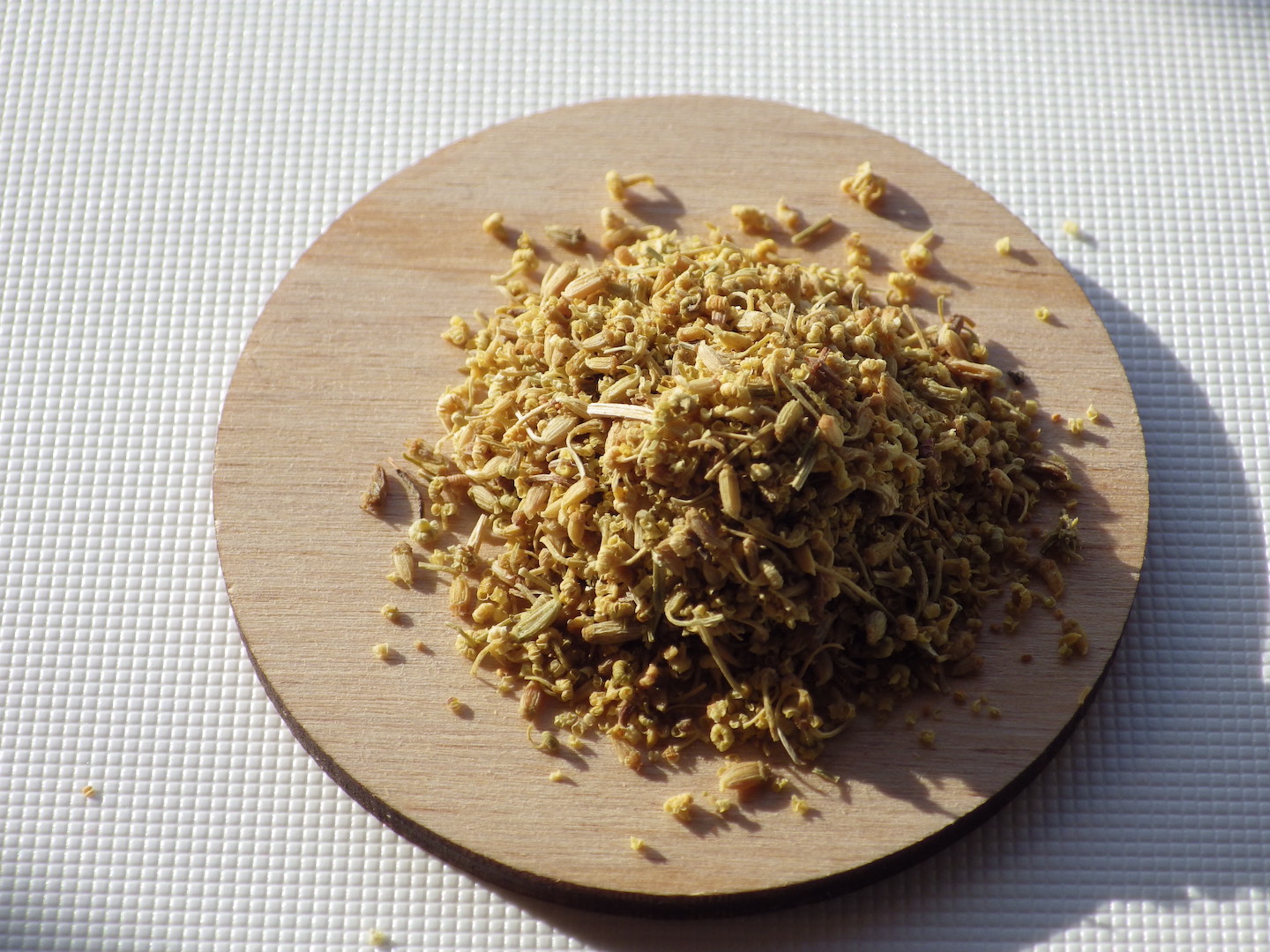
What Is Fennel Pollen?
The pollen is the most flavor-dense part of the fennel plant (Foeniculum vulgare). It is affectionately called the "spice of angels" and "culinary fairy dust" due to its seemingly magical ability to amplify the flavor and aroma of both sweet and savory dishes. A pinch of this spice can make a good dish remarkable. It adds a certain depth and character to other ingredients that are simply not there in its absence. Fennel pollen is specifically cherished as an addition to fish, pork, and desserts, taking a wide variety of recipes to new heights.
Why Is It Expensive?
As you can imagine, the cultivation and harvest of fennel pollen is an intensive manual process. The plant’s tiny yellow flower buds must be handpicked just before they go to seed. They are then laid onto wooden boards, covered with butcher paper, and placed under a protective net in a carefully maintained dry room so that the pollen retains all of its essential oils. After several days, the fennel is tested for moisture and packed into large cotton bags for the final drying process. It becomes the spice when it has a dry and brittle texture, gold-green hue, and strong fragrance. Then it is finally ready to impart a bright, citrusy, warm, buttery, floral, and anise-like flavor to any dish or beverage. Like dill pollen, thousands of flowers are needed to make a usable amount—another reason why it's one of the world's most expensive spices.
Learn more about fennel pollen.
5. Fresh Wasabi Rhizomes
Up to $400 / lb (~$880 / kg)
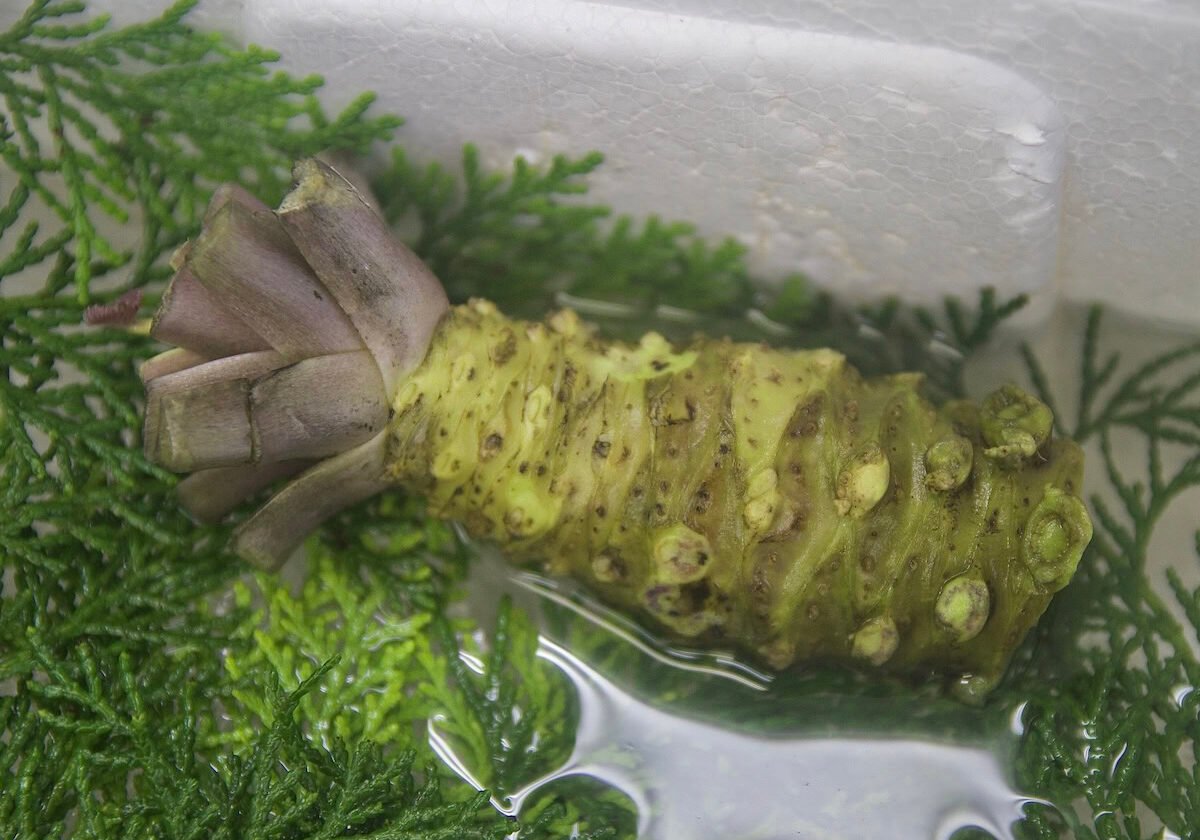
What Is Wasabi?
The better question is what wasabi isn't. Like vanilla, 99%+ of the world's "wasabi" isn't real wasabi. The green stuff served at most Japanese restaurants is a mix of horseradish, mustard, starch, and green food coloring or spinach powder. This blend is used because horseradish and mustard seeds have similar flavor compounds called isothiocyanates. They are all rather closely related. However, it is still a poor substitute for the real thing. Tasting genuine, freshly grated wasabi rhizome is unforgettable. The complex flavor profile and more ephemeral nasal-clearing heat are a treasured rarity that can only be understood by experiencing it directly.
Why Is It Expensive?
Wasabi ranks highly on this list because it's one of the hardest crops to grow. If you travel to one of the cultivating regions in Japan, you can find relatively inexpensive rhizomes. But if you're anywhere else, they command a much higher price due to their scarcity and intense demand.
To get fresh rhizomes from Japan to international markets, exporters must use sophisticated cold-chain logistics to ensure continuous refrigeration at the perfect temperature from origin to delivery. Shipped by air overnight, they must be immediately chilled in a slightly humid environment upon arrival. The expediency is necessary as the flavor begins to decline within days. Even under ideal storage conditions, they only last 2-3 weeks. But for the genuine sensation of wasabi’s delicate, fresh flavor, it’s absolutely worth seeking out.
Learn more about wasabi.
6. Dried Makrut Lime Leaves
Up to $250 / lb (~$550 / kg)
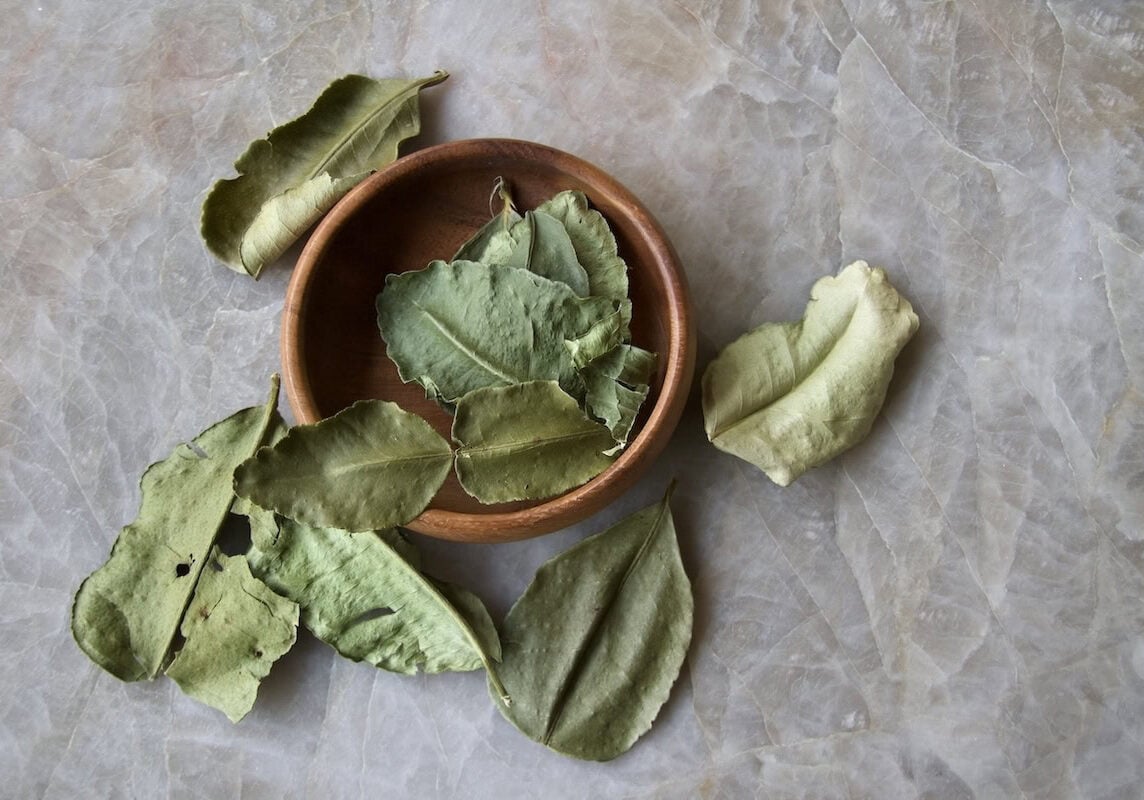
What Are Makrut Lime Leaves?
Makrut lime leaves, also known as kaffir lime leaves, grow on a small, thorny evergreen tree (Citrus hystrix) native to Southeast Asia. They have been used by indigenous cultures since time immemorial in food, medicine, perfume, and cleaning products.
The leaves are double-lobed, stiff, and glossy when fresh. They are often added directly to dishes in thin slices. The zest of the kaffir lime itself is also frequently used in cooking and mixology. Dried leaves are typically used to infuse liquids as you would with bay leaf or curry leaf, but you can also grind them into a versatile citrus seasoning with an electric coffee or spice grinder. While they lack the potent, bright mandarin orange, lemon, and lime notes for which the fresh leaves are famous, dried leaves have a more concentrated, earthy flavor that is rather convenient. They can last up to a year, in contrast to the week that fresh leaves will last in your refrigerator.
Why Are They Expensive?
Drying makrut lime leaves requires careful harvesting, drying, and packaging processes to preserve their flavor. This adds to the labor and cost involved, making them more expensive than their fresh counterpart. Additionally, while the plant grows easily and abundantly in tropical and subtropical regions, even in California, Florida, and Australia, commercial production of the leaves themselves is limited. This is largely due to the incredibly dense, sharp, and long thorns that envelope the leaves. They pose a significant challenge since the leaves must be collected meticulously by hand to avoid them. Hystrix means porcupine in ancient Greek, and harvesters intimately understand how it got its name.
Learn more about makrut lime leaves.
7. Cardamom
Up to $200 / lb (~$440 / kg)
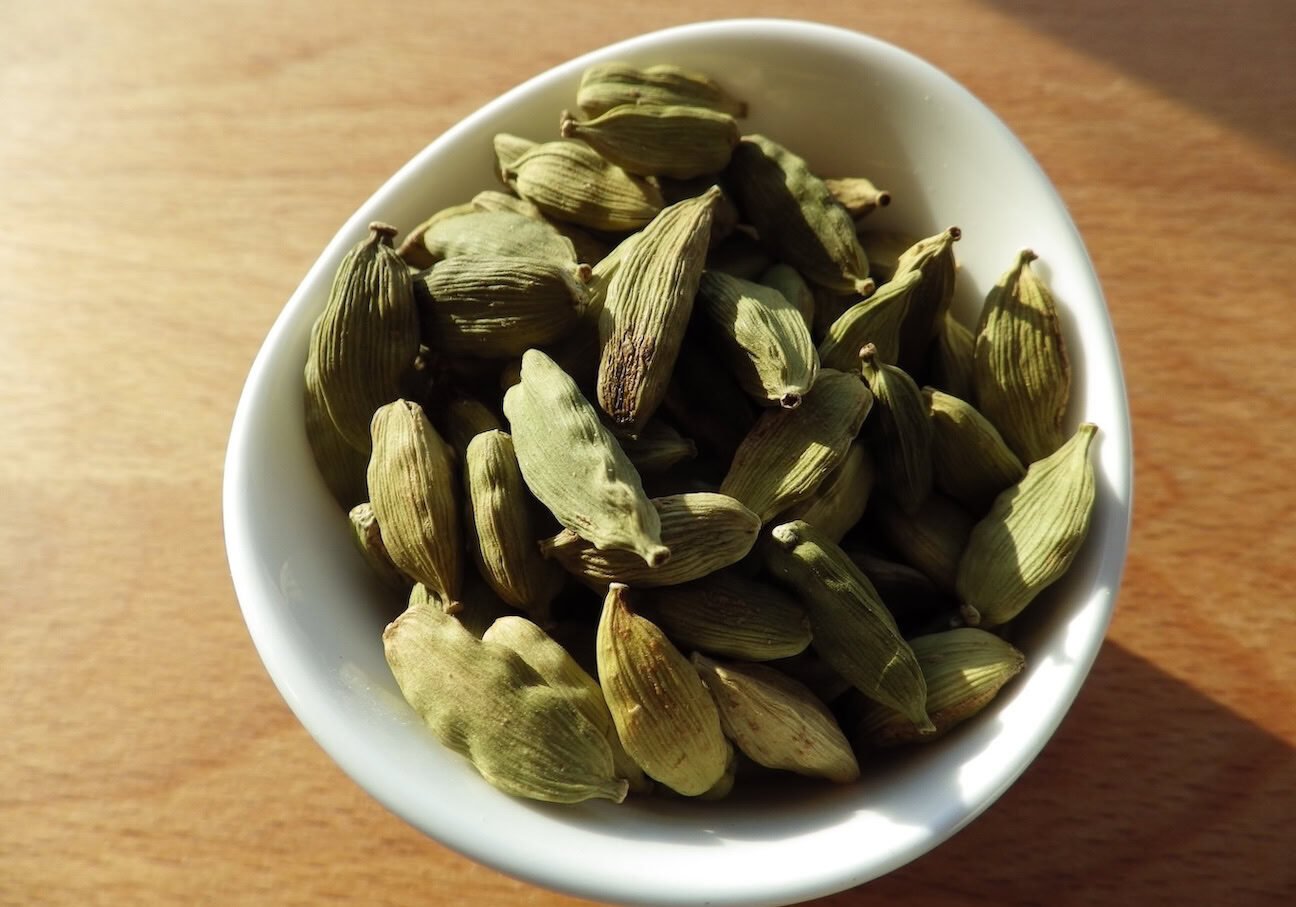
What Is Green Cardamom?
The fruit pods of a tropical herb in the ginger family (Elettaria cardamomum), cardamom, or green cardamom, is the one and only "true cardamom." It has a beautiful aroma that lends itself equally well to dishes and beverages—a pleasant combination of ginger, cloves, cinnamon, nutmeg, eucalyptus, and floral notes. While cardamom is a famously valuable spice to Indian cuisine, the spice trade made it equally popular in Scandinavian baked goods and Middle Eastern coffee and tea.
Why Is It Expensive?
Elettaria cardamomum is very tropical. It only grows in areas subject to high temperatures and humidity that have rainfall of around 150 inches (381 cm) per year. As with all the spices on this list, cultivation is very time- and labor-intensive. It takes four years from seed for the plants to produce a meaningful crop, and they will only continue to produce for three or four more years. The land must be heavily maintained year-round, and the crop itself must be carefully harvested. Skilled farmers maneuver through the terraced fields, breaking off the fruit-bearing shoots and collecting them in woven baskets lined with fresh leaves.
They hand-pick only the pods that have reached optimal ripeness, before they fully ripen and split open. Since cardamom pods are highly perishable and need to be processed quickly to preserve their quality, cultivators must quickly offload their harvest to drying facilities. Unexpected climate changes and ecological shifts brought on by deforestation also affect production, further making it one of the most expensive spices in the world.
Interestingly, a German coffee planter introduced cardamom to Guatemala in the early 1900s, and the country has since overtaken India as the largest global producer.
Learn more about cardamom.
8. Pasilla de Oaxaca
Up to $185 / lb (~$405 / kg)
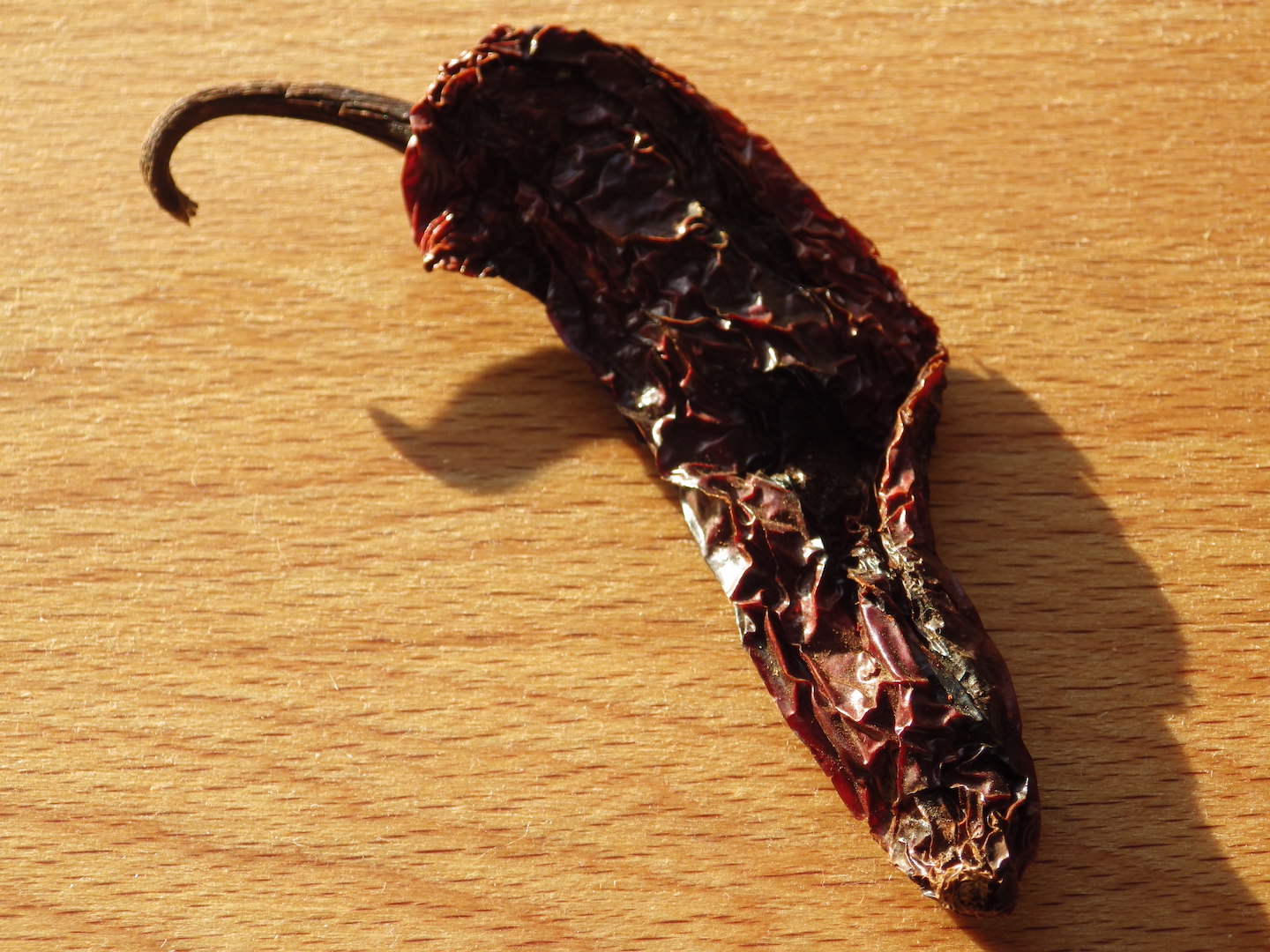
What Is the Pasilla de Oaxaca?
Originating in Mexico and Central and South America, chile peppers have since spread around the globe and split into tens of thousands of cultivars. Many are common and abundant, which is reflected in both their availability and low cost. The Pasilla de Oaxaca is an outlier.
Although technically a pasilla is just a dried chilaca pepper (a mild, highly wrinkled, medium-sized chile), the Pasilla de Oaxaca stands out due to its terroir and its unique smoke-drying process. With its blackish-red color, pronounced smoky aroma, chocolatey and earthy taste, meaty texture, and lightly fruity heat (4,000-10,000 SHU), the Pasilla de Oaxaca is much bolder than its mild pasilla brethren.
Why Is It Expensive?
The Pasilla de Oaxaca is a rare spice. It's only made in the Sierra Mixe region of Southern Mexico. The Mixe people live in the hot, arid, and mountainous region northeast of the city of Oaxaca. A little over a century ago, they created the Pasilla de Oaxaca as a way to preserve their excess fresh chilaca peppers. These chiles fully mature from green to a deep dark red over 100 days. Once they ripen, they are left to partially dry on the vine before harvesting.
The glossy, wrinkled peppers are then collected and smoke-dried over charcoal made from local Encino wood in a traditional adobe oven for several days. This final stage gives them their signature smokiness. When finished, they are carried down the mountain on horseback by indigenous tribes, eventually arriving in the markets of Oaxaca and Puebla days later. They are mainly used locally, with a very small amount reaching external markets like the United States. Hence, their price tag.
Learn more about chile peppers.
9. Long Pepper
Up to $100 / lb (~$220 / kg)
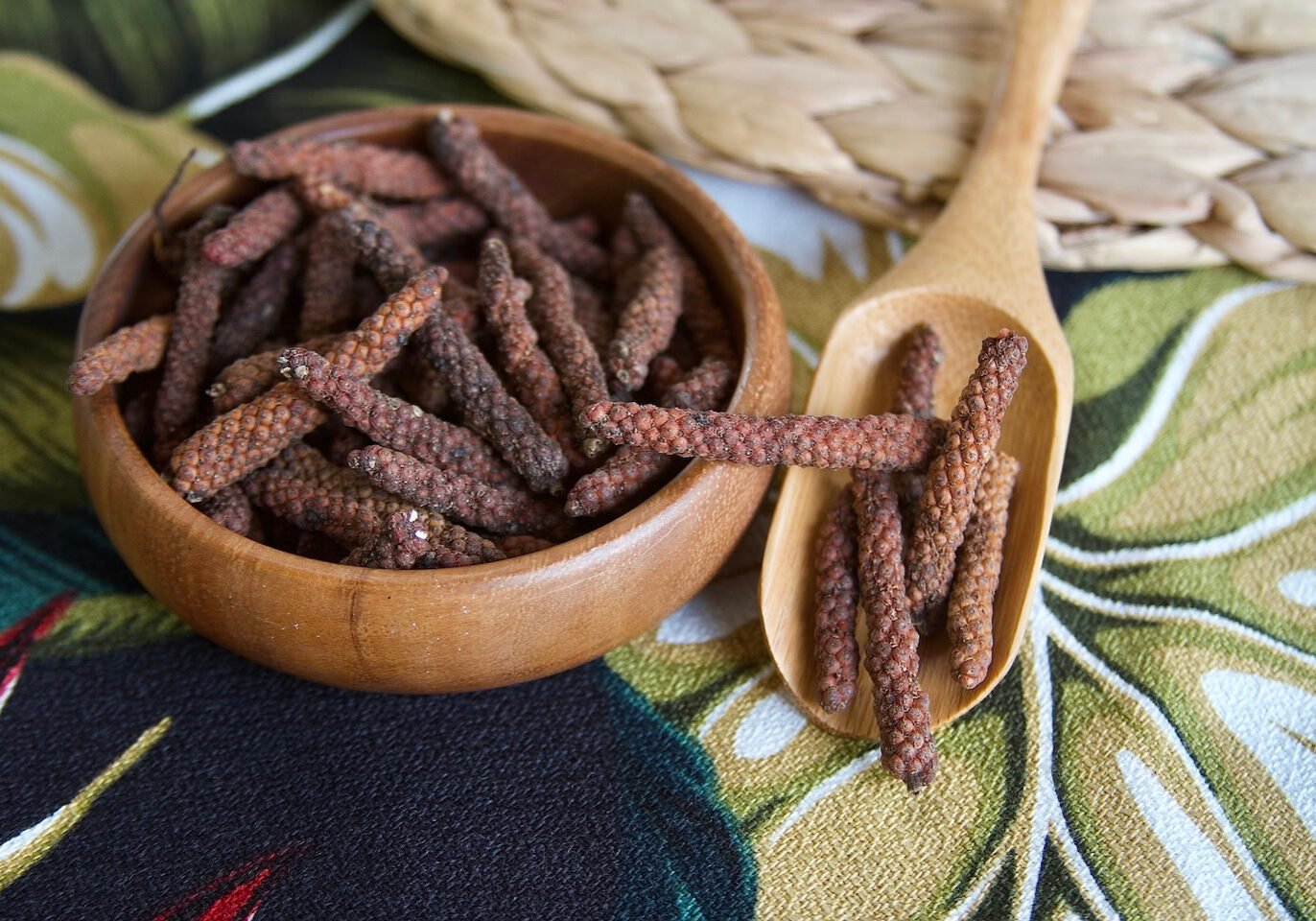
What Is Long Pepper?
Growing on a slender tropical climbing vine (Piper longum), the long pepper is a fruit native to South and Southeast Asia. A close relative of black pepper, long pepper "spikes" pack a similar heat. However, they also mix a floral, fruity aroma and slightly sweet taste with hints of cinnamon, nutmeg, and cardamom. So while it can directly replace black pepper in recipes, it adds serious depth and a more resinous finish.
Why Is It Expensive?
Long pepper is many multiples more expensive than black pepper. Piper longum is harder to cultivate, requires more specific growing conditions, and has lower yields. Harvesting and processing the long spikes is also more complicated than black peppercorns, so its supply remains constricted.
Historically, long pepper was favored over its cousin, but when Vasco da Gama discovered a sea route to India in 1498, black pepper's much more abundant supply could finally flood the European market. Sadly, long pepper faded into obscurity. Only recently have Western cuisines become reacquainted with this ancient culinary wonder. Chefs are discovering the value of its more complex flavor profile and demand is finally growing after centuries of obscurity. Therefore, its limited supply plus its newfound popularity keeps its price up.
Learn more about long pepper.
10. Mahlab
Up to $90 / lb (~$200 / kg)
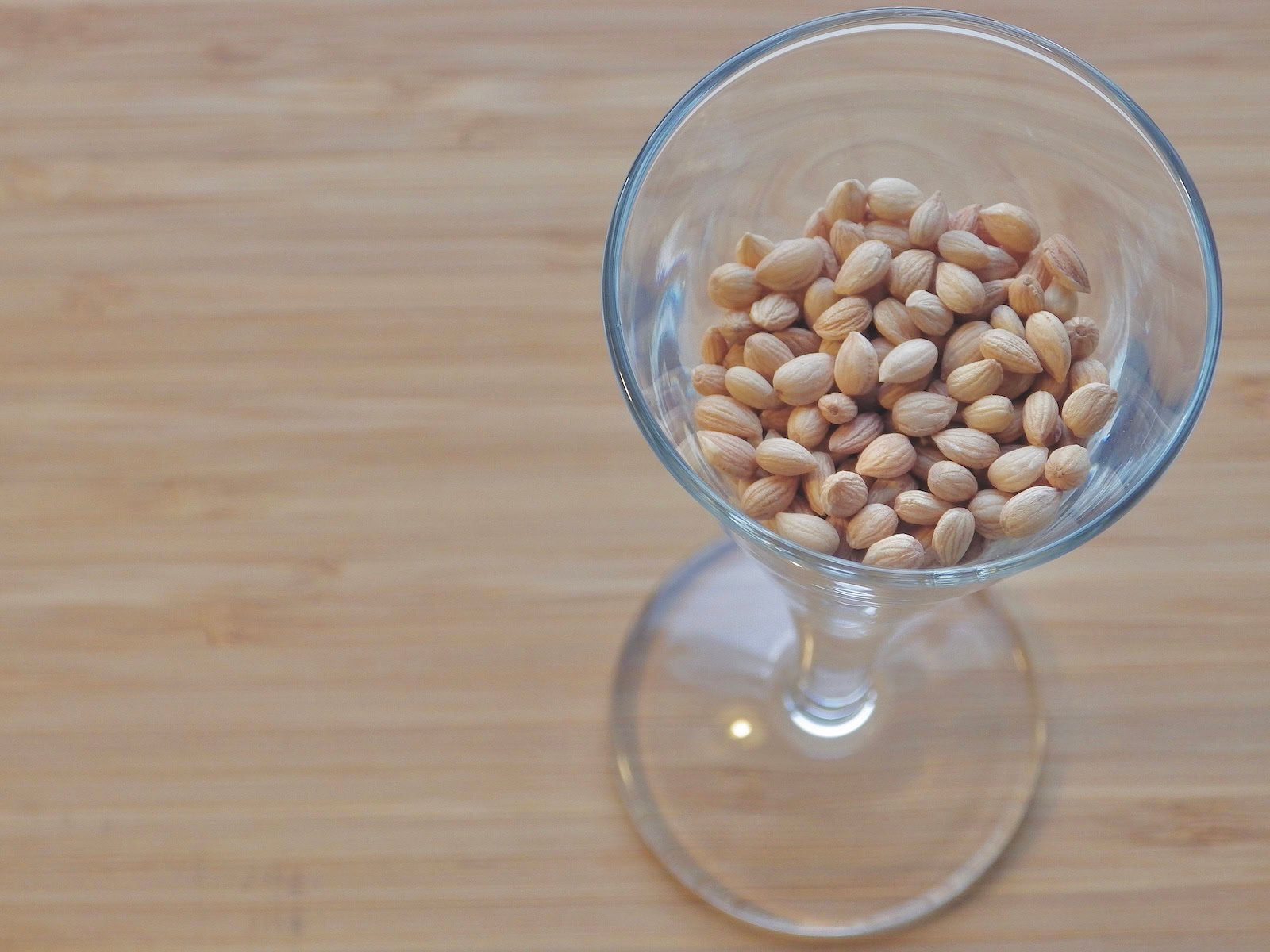
What Is Mahlab?
Originating in Central-Southern Europe and Northern Africa, mahlab is a deeply aromatic spice derived from the seed kernels within the cherry pits of the St. Lucie tree. Traditionally, Greek, Turkish, and Middle Eastern cuisines use mahlab to sharpen the sweet flavor of baked goods and desserts, adding unique notes of bitter almonds, roses, cherries, and traces of vanilla. When cooked, however, it transforms from floral to fruity. The spice is best bought and stored whole in an airtight container and then ground as needed since mahlab's best notes have already dissipated from pre-ground powders.
Why Is It Expensive?
Although now widely used as an ornamental tree and rootstock upon which to graft commercial fruit cherry cultivars, the St. Lucie tree used to be prized for the spice it held in its cherry’s small pits. Today, there are very few producers, limiting its supply and raising its price. As you may have guessed, mahlab also requires a labor-intensive production process. Each stone-like cherry pit must be dried until its brittle enough to be cracked open to extract the little seed kernel within. There is typically only one kernel per pit, and they must be processed individually. The kernels are then cleaned and dried further to solidify their flavors before they're prepared for distribution.
Demand in the West is increasing due to a growing interest in Middle Eastern cuisine as well as its use in novel Western dessert recipes. Mahlab can be difficult to find, but specialty Mediterranean and Middle Eastern markets tend to carry it.
Learn more about mahlab.
11. Grains of Paradise
Up to $85 / lb (~$185 / kg)
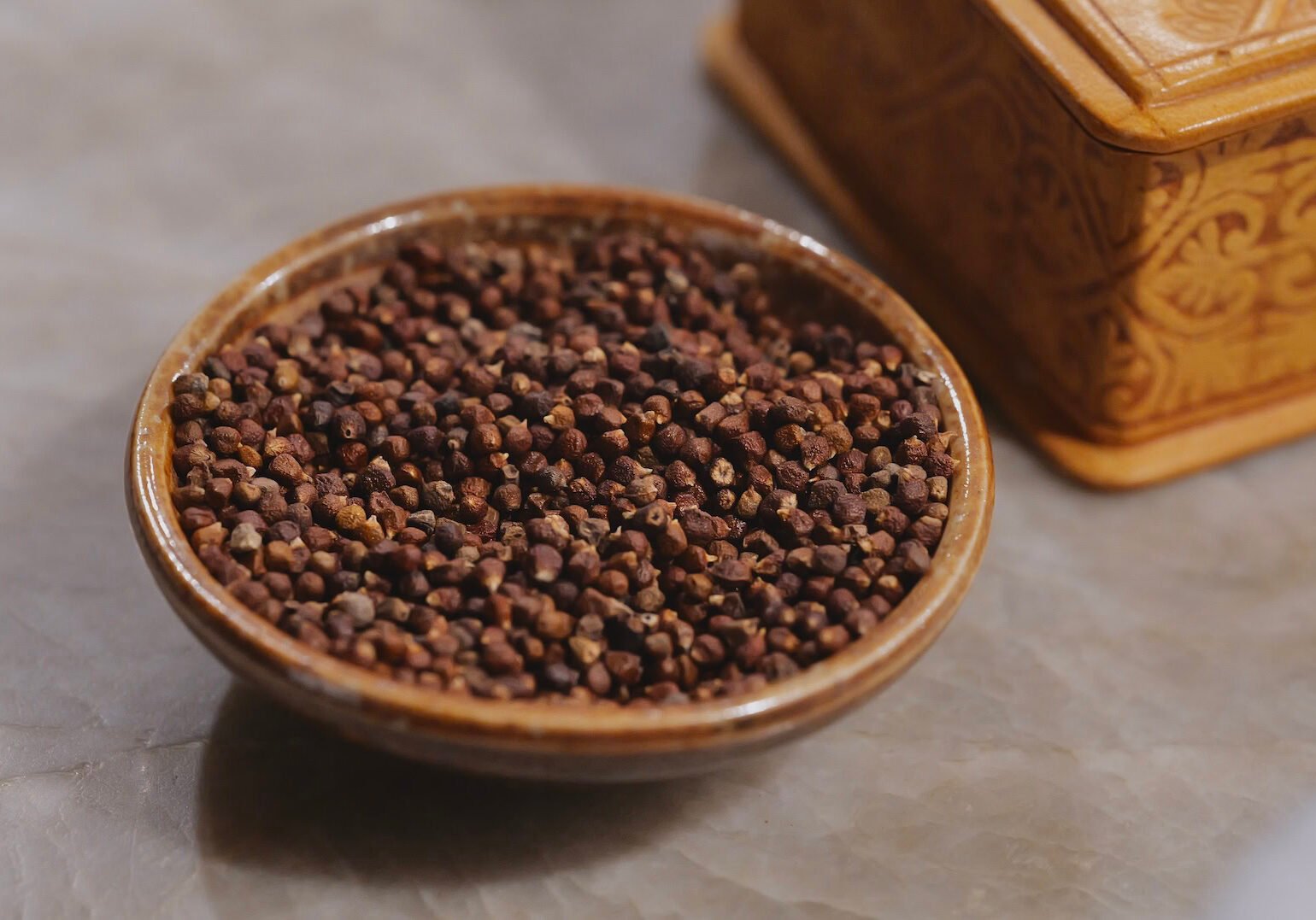
What Is Grains of Paradise?
Hailing from the coastline of West Africa’s Gulf of Guinea, grains of paradise is the seed of a tropical herb in the ginger family (Aframomum melegueta). The reddish-brown seeds are only a few millimeters in diameter and resemble miniature hazelnuts. Generally interchangeable with black pepper, allowing for tons of culinary opportunity, grains of paradise is much more nuanced. It has a milder yet more complex peppery heat that builds slowly, carrying with it notes of ginger, lavender, citrus, juniper, and jasmine.
Why Is It Expensive?
Although relatively rare in modern international markets, grains of paradise was one of the primary traded spices from the Roman era through the Middle Ages. Like long pepper, it was another predecessor to black pepper before the sea route to India was discovered at the end of the 15th century. When that happened, it too faded from the global culinary scene.
Today, the main producer of grains of paradise is Ghana. Outside its native range, where traditional use is still strong, grains of paradise has limited visibility, which limits production. However, interest is now growing. It's a key ingredient in Samuel Adams’ Summer Ale, Bombay Sapphire Gin, and the famous Moroccan spice blend Ras el Hanout. Chefs around the world are rediscovering its magic and getting creative with its many applications, which is driving up demand and its price.
Learn more about grains of paradise.
12. Ceylon Cinnamon
Up to $80 / lb (~$175 / kg)

What Is Ceylon Cinnamon?
Ceylon cinnamon, or "true cinnamon," is derived from the inner bark of a tropical evergreen tree native to Sri Lanka (Cinnamomum verum). Prized for its delicate sweetness with notes of citrus, vanilla, and brown sugar, it's the more refined cousin of the common cassia cinnamon. The quills, or "sticks," of Ceylon cinnamon are thin, brittle, and filled with additional layers of bark. Cassia's bark is much thicker, harder, and hollow. Ceylon quills are also a lighter, golden brown, while cassia's are a deeper reddish brown. Ceylon cinnamon exudes a warm and inviting aroma, making it a versatile ingredient in both sweet and savory dishes. It also has a significantly lower coumarin content (250x less than cassia), which makes its health benefits much more attractive for regular use.
Why Is It Expensive?
While cassia cinnamon dominates supermarket shelves, Ceylon cinnamon can be found in specialty spice shops and online retailers. It fetches a higher price due to its more constricted geographic range and the difficult process of harvesting its thin, brittle inner bark. it is typically collected during the rainy season when the bark is easier to peel. In Sri Lanka, the peak harvest periods occur twice a year, in May and November, aligning with the island's biannual monsoon seasons. Harvest involves cutting young shoots and carefully stripping the bark, which is then rolled into quills and left to dry for 4 to 5 days.
Ceylon cinnamon isn't just fabled as the best quality cinnamon in the world. It really is the only way to experience the essence of true cinnamon, which is why it's such an expensive spice.
Learn more about Ceylon cinnamon.
The Reigning Champs
While spice prices vary depending on quality, time (year and season), region, and various market factors, these spices will likely remain on this list for years to come unless new technologies or cultivation methods are invented. They are inherently more difficult to produce and are cherished for their uniqueness, so demand remains high while supply is consistently constrained.
Although other spices occasionally spike in price due to their alluring newness, these prices are not confirmed or maintained by markets over time. A great example is the Aji Charapita chili pepper from Peru which was reportedly priced as high as $35,000 / kg in 2016. That price was never verified by legitimate sources, nor was it sustained by the market. Sometimes increased demand for a scarce resource will shoot prices up to absurd levels momentarily, but they are just anomalies. So while this list can potentially change year to year, these are consistently the most expensive spices in the world. We’d love to hear from you if you find a spice that unseats any of them!

